What Museum Is the Art From the Parthenon in in Europe
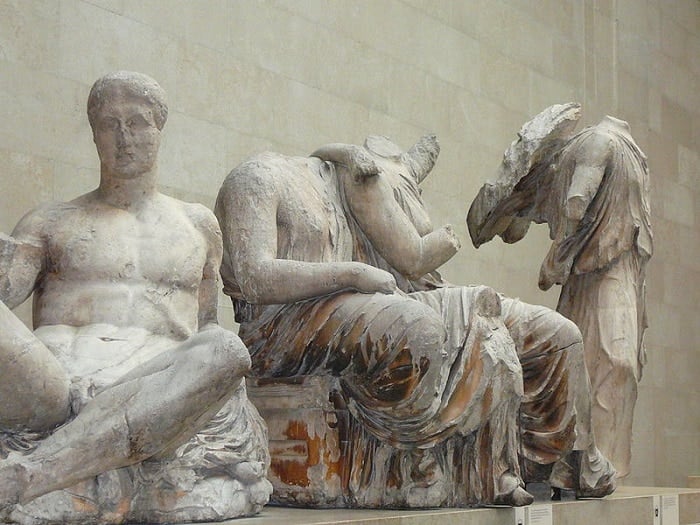
The Parthenon Marbles, currently held at the British Museum, are by far the well-nigh famous of all the ancient Greek works of art displayed in museums outside the country and are surely the almost controversial.
But many other every bit magnificent pieces of Greek art are displayed in diverse museums around the globe, and sometimes these priceless treasures are overshadowed by our focus on the lost Marbles.
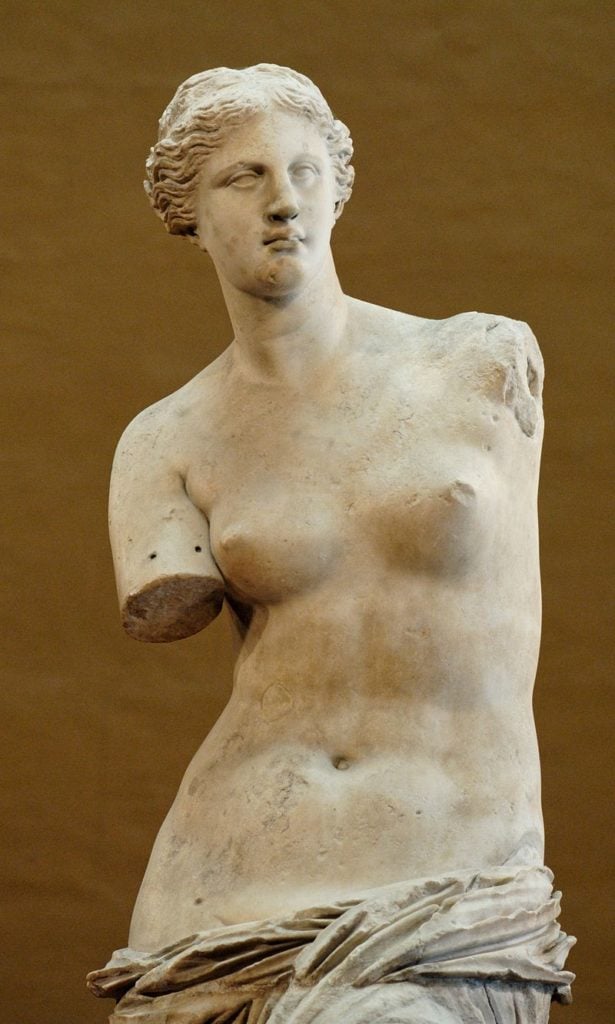
The Venus de Milo, a Greek goddess at the Louvre
Discovered on the isle of Milos in 1820, the Venus de Milo is one of the most exquisite examples of ancient Greek sculpture. Immediately recognizable by her missing arms, the iconic sculpture remains shrouded in mystery.
Her arms have never been discovered to this day, and there is a healthy contend almost who the sculpture portrays. Is information technology Aphrodite, who was oft shown one-half-naked, or the ocean goddess Amphitrite, who was venerated on Milos?

A stunning Greek ruddy figure Hydria in the British Museum
This vase is the finest object in the beginning drove of Greek vases assembled by Sir William Hamilton and sold to the British Museum in 1772.

The figures depicted on the vase are divided into 2 zones.
The upper zone illustrates the abduction of the daughters of Leukippos by Castor and Polydeukes with Aphrodite conniving in the abduction while the lower zone depicts Herakles performing his final labor.

Discophoros at the Louvre Museum
This discus thrower is a reproduction of a lost bronze original created by the Greek sculptor Naucydes at the beginning of the fourth century BC.
The athlete is portrayed adjusting his position at the very instant earlier the throw.
This statue was role of the collection of antiquities at the Villa Borghese in Rome, where it stood with three other athletes around "The Gladiator," which besides entered the Louvre at the aforementioned period.
This occurred in 1808, when Napoleon Bonaparte purchased the drove from his blood brother-in-police, Prince Camillo Borghese.
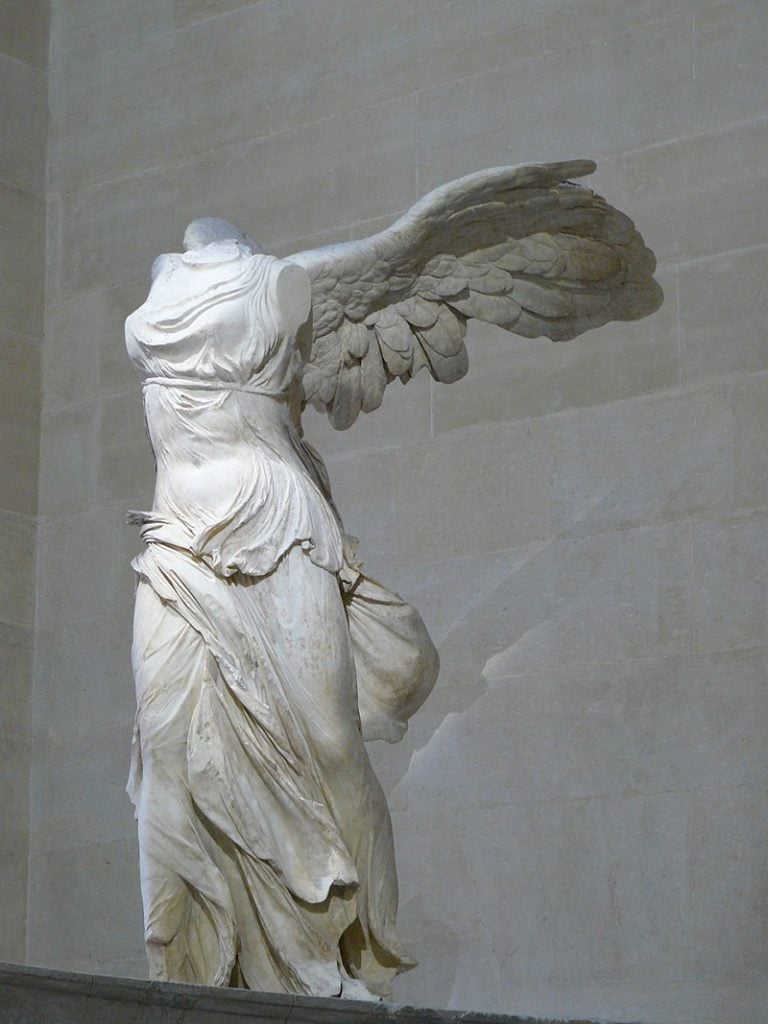
The Nike of Samothrace, a masterpiece of Greek art
The Winged Victory of Samothrace is widely considered to be 1 of the most celebrated sculptures in the entire world.
Unearthed in 1863 on the small-scale, beautiful island of Samothrace in the northwest Aegean, information technology is i of the Louvre'south nearly visited sculptures. However, yous can observe a faithful replica of the sculpture on the island today.
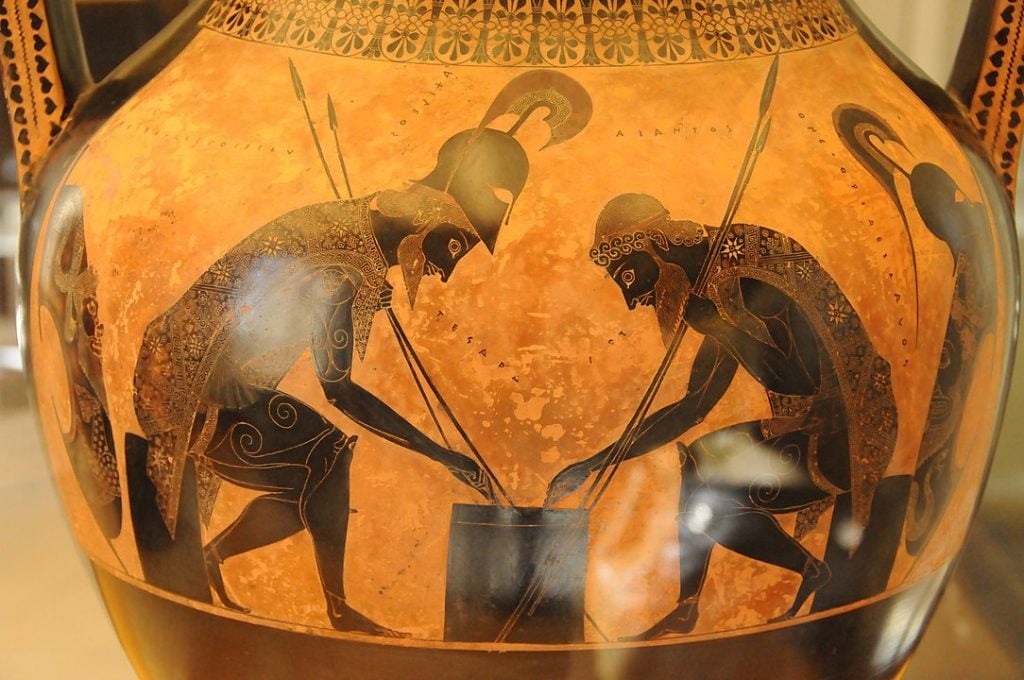
The amphora that depicts Achilles and Ajax playing die
Widely regarded every bit Exekias' masterpiece, this famous amphora depicts Achilles and Ajax seated and playing die; and you lot can read out the points won—iv and 3, respectively.
This is indicated by the inscriptions that sally from the figures' mouths, as if in a comic strip. The two are portrayed fully dressed for battle with spears and trunk armor.
This intimate view of life in antiquity makes the amphora a unique work of Greek art.

The Resting Satyr, a common figure in Greek art, at the Capitoline Museum in Rome
The Resting Satyr, or Leaning Satyr, is attributed to the ancient Greek sculptor Praxiteles.
In ancient Greek Mythology, satyrs are male person companions to Dionysus and are known for their love of wine, women, and playing music on their pipes or flutes.
There are 115 similar sculptures of satyrs featured at museums around the world, making it a very common theme in Greek art, simply the very all-time instance of this field of study can exist found at the Capitoline Museum in Rome.

The Cleveland Apollo, or the Python Slayer, a rare bronze work of Greek art
This life-sized bronze sculpture, a depiction of a youthful Apollo, is engulfed in controversy well-nigh who its actual creator was.
The sculpture is currently considered to be a product of Praxiteles' workshop and may be i of the only large Greek statuary statues which can be attributed to a Greek sculptor.
As rumors have circulated that the statue was looted from Hellenic republic, the country has made repeated attempts to take the priceless masterpiece of Greek fine art returned to its home.
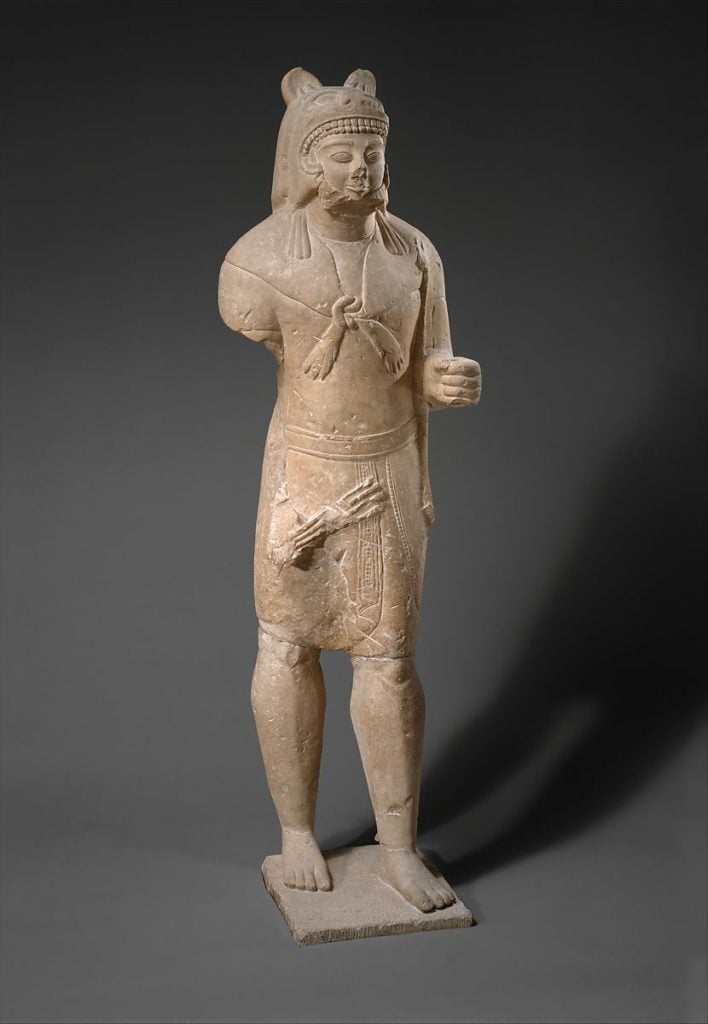
Limestone Herakles, at the Metropolitan Museum of New York, Usa
Thought to accept been sculpted in 530 B.C. – 520 B.C., this statue of Herakles, from Republic of cyprus, was created during the Primitive period.
Despite excessive, extreme restoration in the nineteenth century, which unfortunately altered many of its original features, this figure is show that Cypriot sculptors were working on a large scale equally early equally the beginning of the sixth century B.C..
Source: https://greekreporter.com/2022/04/21/ten-magnificent-greek-works-of-art-found-in-foreign-museums/
0 Response to "What Museum Is the Art From the Parthenon in in Europe"
Post a Comment